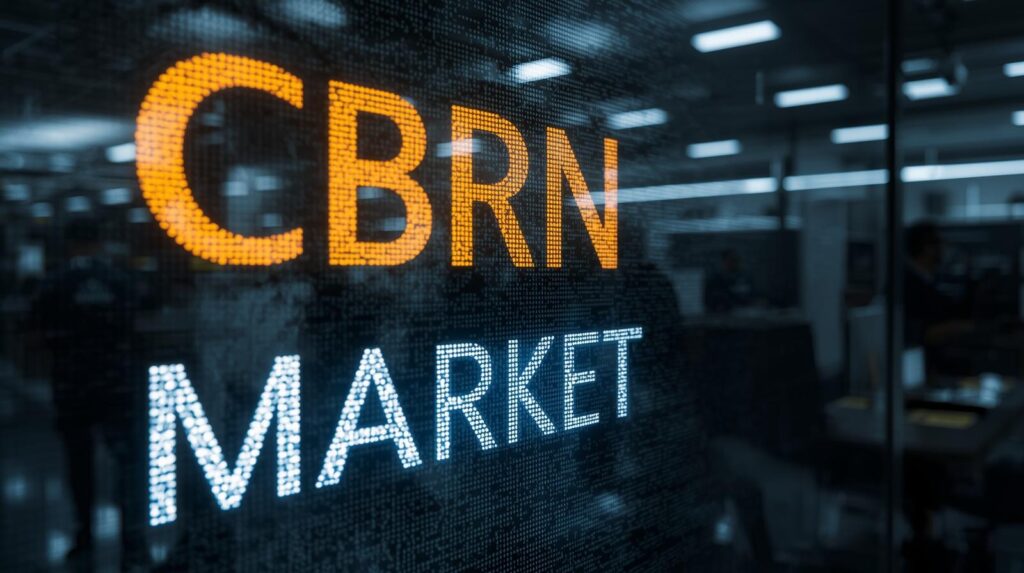The CBRN (Chemical, Biological, Radiological, and Nuclear) Defense Market is witnessing substantial growth as nations strengthen their capabilities against evolving threats. According to MarketsandMarkets™, the global CBRN Defense Industry was valued at USD 16.1 billion in 2023 and is projected to reach USD 21.4 billion by 2028, growing at a CAGR of 5.8%.

CBRN defense solutions are critical for governments, military organizations, and first responders, enabling them to detect, identify, prevent, and respond effectively to hazardous threats. The rising prevalence of industrial accidents, terrorism, and global geopolitical tensions has increased the importance of CBRN preparedness across the globe.
Download PDF Brochure @ https://www.marketsandmarkets.com/pdfdownloadNew.asp?id=112383226
Importance of CBRN Defense
CBRN threats pose significant risks to public safety, national security, and critical infrastructure. Effective defense measures include:
- Protective wearables: Hazmat suits, gloves, gas masks, and footwear for first responders and military personnel.
- Detection and monitoring systems: Portable and fixed devices to identify chemical, biological, radiological, and nuclear hazards.
- Decontamination systems: Equipment to neutralize or remove hazardous substances from affected areas.
- Respiratory protection: Advanced breathing apparatus to safeguard personnel from toxic environments.
- Simulation and information management tools: VR and AR-enabled training systems for realistic threat response.
Modern technologies such as the Internet of Things (IoT), augmented reality (AR), and virtual reality (VR) are enhancing situational awareness and response capabilities in CBRN defense.
Market Growth Drivers
1. Rising Global Threats
The increase in terrorist activities, industrial chemical accidents, and biological hazards is compelling governments to adopt comprehensive CBRN defense solutions.
2. Military and First Responder Modernization
Defense forces and emergency response units are equipping personnel with advanced protective wearables, detection instruments, and decontamination systems to enhance operational readiness.
3. Integration of Advanced Technologies
Adoption of smart sensors, real-time monitoring systems, and AI-driven threat detection is transforming the market, enabling faster, more accurate responses to CBRN threats.
4. Increasing Government Expenditures
Countries in Asia Pacific, North America, and Europe are investing heavily in CBRN preparedness, driving growth across protective gear, detection systems, and training technologies.
Market Segmentation
By Type: Chemical Segment Dominates
The chemical segment accounts for the largest share of the market due to the prevalence of chemical hazards and the need for specialized protective gear. This includes:
- Chemical detection devices
- Portable analyzers and laboratory instruments
- Protective clothing, gloves, and gas masks
The growing number of chemical incidents and industrial hazards is a key factor driving the adoption of chemical CBRN defense equipment.
By Equipment: Protective Wearables Lead
Protective wearables are the most significant equipment segment, encompassing:
- Full-body hazmat suits
- Gas masks and hoods
- Escape devices, gloves, and specialized footwear
First responders, police units, hazmat teams, and military CBRN units rely on these systems to safely operate in hazardous environments. Advanced suits like Mopp-4 provide maximum chemical and biological protection, making protective wearables a top priority in defense procurement.
By End Use: Defense & Government Sector
The defense and government sector dominates the market, employing CBRN solutions for:
- Military operations
- Border security
- Emergency response and homeland security
- Civil protection and public safety
In the Asia Pacific region, this segment is expected to experience the highest growth, driven by increased defense spending and military modernization in countries like India, China, and South Korea.
Regional Insights
Asia Pacific: Leading Market
Asia Pacific is projected to lead the global CBRN Defense Market from 2023 to 2028. Key factors include:
- Rising terror and industrial incidents
- Expansion of CBRN response units
- Government investments in military modernization
- Growing adoption of advanced protective and detection technologies
The region’s focus on homeland security and public safety is fueling the demand for CBRN solutions.
North America and Europe
North America maintains a strong market presence due to high defense budgets, technological expertise, and advanced infrastructure. Europe continues to invest in CBRN defense to protect against both natural and man-made hazards.
Competitive Landscape
Prominent players in the global CBRN Defense Market include:
- Rheinmetall Defence (Germany)
- Thales Group (France)
- Smiths Group PLC (UK)
- Teledyne FLIR LLC (US)
- Bruker Corporation (US)
Strategies employed by these companies include:
- Launching innovative products with advanced technology
- Securing government contracts
- Collaborating to establish R&D centers for next-generation CBRN solutions
These initiatives allow leading players to maintain technological leadership and market share globally.
Future Outlook
The future of CBRN defense will be shaped by:
- AI and IoT-enabled detection systems for faster threat identification
- Advanced protective wearables with integrated sensors
- Simulation-based training using VR/AR for realistic preparedness
- Smart decontamination solutions integrated with robotics
Ask for Sample Report @ https://www.marketsandmarkets.com/requestsampleNew.asp?id=112383226
As threats evolve, governments and defense organizations will continue investing in modern, scalable, and integrated CBRN defense solutions to ensure national security and public safety.
The CBRN Defense Market is on a steady growth trajectory, projected to reach USD 21.4 billion by 2028. Rising threats, technological advancements, and increased government investments are driving the demand for sophisticated protective, detection, and decontamination systems.